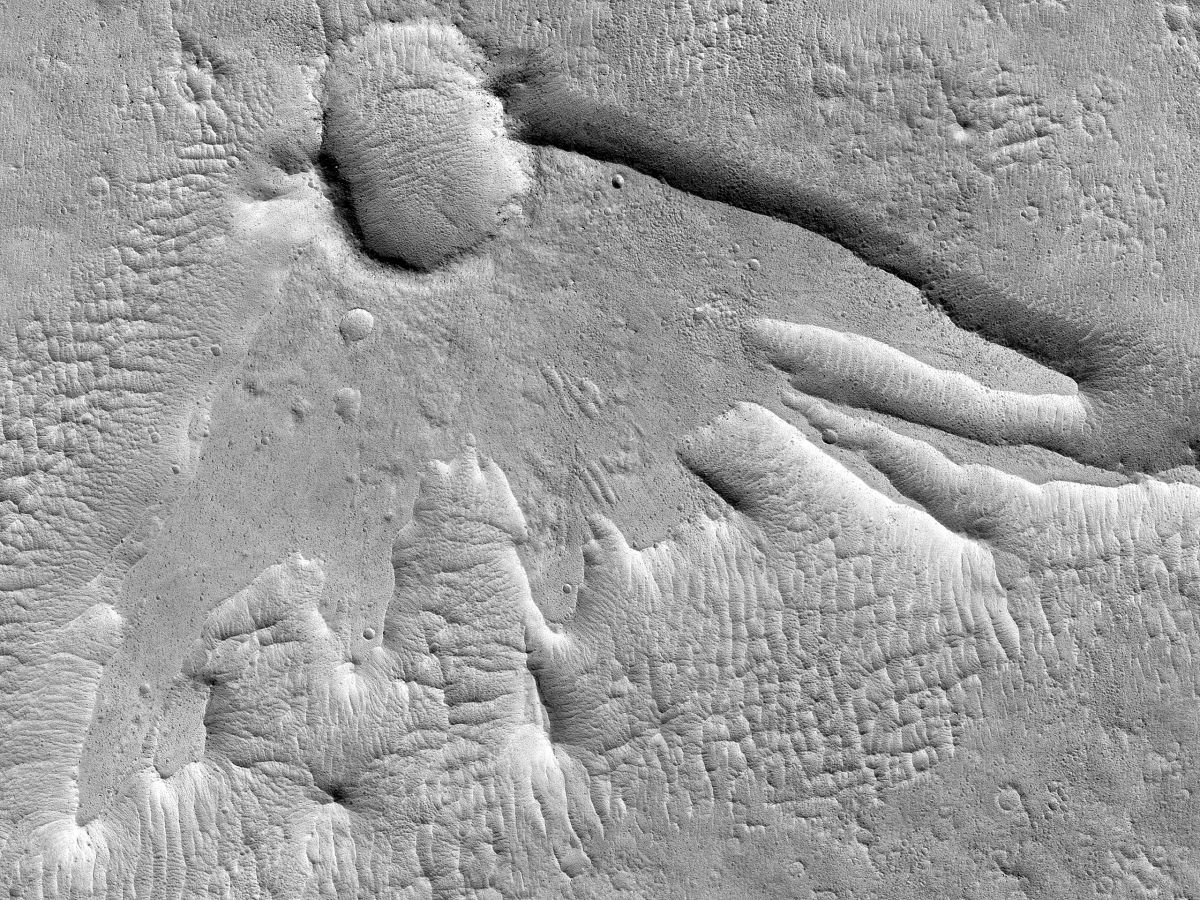Impact craters are nature’s signature from a more chaotic time in our Solar System’s history. A quick glance at the Moon’s disfigured surface makes that clear. Same with Mars, though a telescope is needed to examine it. Or better yet, an orbital spacecraft with a powerful camera.
The Mars Reconnaissance Orbiter and its HiRISE camera have been examining Mars’ surface for years, cataloguing the planet’s menagerie of impact craters. One of them, recently chosen as the HiRISE Picture of the Day (HIPOD,) looks like a Thunderbird. Or a dinosaur footprint left in the mud.
This impactor, whether an asteroid or a comet, struck Mars at an angle. Most of the debris from that impact is clustered in a raised plateau on the west, which is at the top of this image. That debris acted like a hardened cap covering the native Martian material underneath it. The rest of the impactor sprayed out into a pattern resembling a Thunderbird or maybe a dinosaur footprint.
Over the ages, aeolian forces eroded away the rest of the debris, leaving the plateau behind.

The unnamed crater is about 5 km across, and it’s one of hundreds of thousands of craters in this size range. It’s located near the much larger Schiaparelli crater and the enormous Hellas Planitia impact basin.

NASA’s Mars Reconnaissance Orbiter has been studying the planet since its orbital insertion in 2006. Over that time, it’s documented a multitude of different craters with different intriguing features. There are craters filled with dunes, craters shaped by the sublimation of ice, and even double craters.

Mars’ position near the asteroid belt means it’s been struck by a wide variety of objects at different angles and speeds. Not only that but the planet’s subsurface in many places contained water or ice, which only adds to the strangeness of the craters that dot its surface.
Over time, the population of potential impactors in the Solar System has changed. Eventually, the larger impactors that create vast basins like Hellas Planitia have been depleted. Impactors now tend to be smaller.
Impact craters are the most significant surface feature on rocky planetary bodies. Most of them are oblique impact craters caused by meteoroids. But they don’t all look like the leading image. Oblique impactors create a variety of crater forms.

The most well-known low-angle impact crater isn’t on Mars or the Moon. It’s right here on Earth. Researchers are pretty sure that the dinosaur-killing Chicxulub impact crater is from a low-angle impactor. This is more than just academic. If the impact angle had been different, the outcome may have been different. “A steeply-inclined impact produces a nearly symmetric distribution of ejected rock and releases more climate-changing gases per impactor mass than either a very shallow or near-vertical impact,” write the authors of a 2020 paper examining the Chicxulub impact.
Scientists are very interested in impact craters since they’ve shaped the surfaces of planets and have had a profound impact on the trajectory of life on Earth. Johns Hopkins University has a lab dedicated to studying how craters are made.
The Solar System has calmed down a lot since the early days. The reservoir of potential impactors has been depleted over time, though there’ll never be a total lack of them.
There’ll also never be a lack of interesting images of the craters they leave behind.


